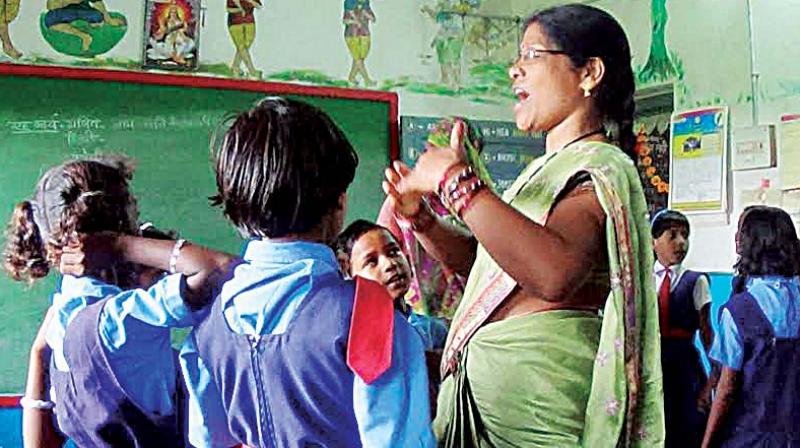For Yadgir students, Kannada is English!
The number of symbols used are extensive and complex.

Bengaluru: A recent study on class three students at Yadgir block, a rural region in the state, has found that their ability to use basic Kannada for communication was poor. According to the findings of Literacy Research in Indian Languages (LiRIL), the absence of an effective training system for teachers at rural areas has contributed to this alarming situation, with instances of students even finding it difficult to differentiate between English and Kannada.
Sharing an incident from the course of study at a school, researchers found that the most socially and academically marginalised students experienced difficulties with the school dialect. “One boy when asked about the difference between his home and school languages said that he spoke Kannada at home, but was learning English at school. He did not realise that what he learning at school was a different dialect of Kannada,” the researcher observed.
The three-year study was conducted by Azim Premji University and Tata Trusts on 360 students each at Yadgir and Wada (Palghar district, Maharashtra) as they moved from class one to three also found that school based literacy and learning was not experienced as a relevant or meaningful activity in the children’s lives. “Teachers do not recognise the validity of children’s home languages and use dismissive/derogatory terms when talking about them. The scripts take several years to master. The number of symbols used are extensive and complex. However, school curriculum and textbooks do not account for this.” the study observed.
Even though 77 per cent of the students could read ‘moolaksharas’ (base-letters), the numbers reduced to 36 per cent and 16 per cent when their ability to read grade one level words and grade two level passage were tested respectively.
As much as 60 per cent students failed to answer a single question from a grade three level passage, indicating their inability to make meanings out of the letters and words they read together. According to Prof Shailaja Menon, Principal Investigator of the project, it is essential to push the understandings about specific contexts in which children (especially from socio-economic marginalized communities) learn to read and write.
“The findings of the project urge us to push the conversation beyond simply stating that many children in India fail to learn to read and write proficiently by analysing reasons for the same. We need to have a vision of an appropriate early language and literacy curriculum to see how the curricula we currently have measure up to our ideals,” she said.
The study recommended four steps to overcome the situation – a balanced approach to literacy, encouraging teachers to develop themselves as readers and writers in order to teach in rich and meaningful ways to children, teaching the art of listening, speaking, reading and writing in inter-related ways and supporting a higher order meaning-making among students with the help of children’s literature in every school/classroom.
“Multi-pronged approach that looks at curriculum, teacher preparation and teaching learning processes helps uncover key gaps and makes specific recommendations that can inform practitioners and policy makers alike,” recommended Amrita Patwardhan, Head- Education and Sports of Tata Trusts.
Class III students in Yadgir who can read
Moolaksharas – 77%
Matras – 49%
Jodaksharas – 22%

